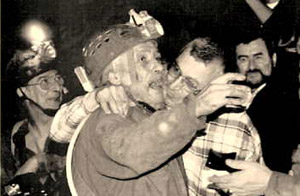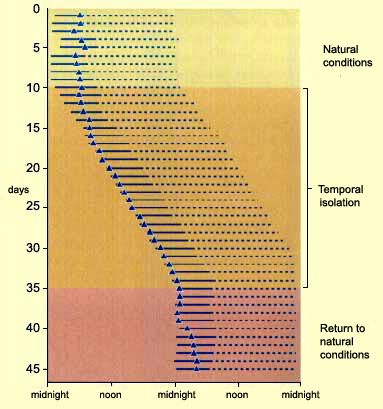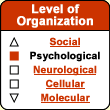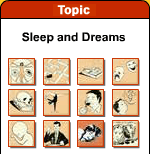|
|




In the annals of chronobiology,
the names of two pioneers crop up continually: Colin Pittendrigh,
who discovered the circadian clock in fruit flies and described
the common characteristics of circadian clocks, and Jurgen
Aschoff, who uncovered the physiological mechanisms that
regulate circadian rhythms in birds and mammals, including
humans.
|
Around 1860, French
physiologist Claude Bernard demonstrated a major principle
that governs living organisms, which he named homeostasis. Bernard
defined homeostasis as the organism’s ability to maintain
relative stability in the various components of its internal
environment, despite the constant variations in its external
environment.
Chronobiology has since demonstrated
that homeostasis is very much a dynamic process—by
virtue not only of its responses to variations in external
environmental factors, but also of the body’s many
internal cycles. Some authors, such as neurologist Antonio
Damasio, have even proposed referring to homeodynamic processes
rather than homeostatic ones, to emphasize that there is
not not just one form of homeostasis, but several different
ones, varying with the time of day, the month, and even the
year. |
|
|
The research field now known as chronobiology
deals with the body’s biological rhythms: the way that it
generates its physiological oscillations and keeps its various
systems synchronized.
Ever since the
first findings suggesting that cycles of varying length occur
in the human body, scientists’ understanding of chronobiology
has rapidly grown more complex. They quickly realized that daylight
alternating with darkness was not the source of human circadian
rhythms, but simply the means by which a truly endogenous central
biological clock within the body is kept synchronized with the
hours of day and night. This central clock that is synchronized
by daylight is located in the suprachiasmatic
nuclei of the brain.
Scientists also soon discovered the importance of this cyclicity
in most of the body’s major systems. Whatever physiological
variables researchers measured—such
as cell metabolism, body temperature, or the secretion of various
hormones—each seemed to fluctuate in a cycle with its
own specific peaks and troughs.
Many experiments have been conducted to uncover the subtle connections
among these various rhythms. Some of the greatest insights have
been provided by temporal-isolation experiments,
in which subjects are completely isolated from the usual cues of
alternating day and night, such as daylight and traffic noises.
Numerous researchers have conducted such experiments, to examine
questions such as whether, under such conditions, people continue
to fall asleep at their usual time, or whether their activity cycle
instead begins to run too fast or too slow.
The first temporal-isolation experiments
were conducted in caves, where the temperature is naturally constant
and where subjects can be completely isolated from the outside
world. The first major finding from these experiments was that
the subjects’ circadian rhythms persisted despite this isolation,
which proved that all human beings have an “endogenous clock” inside
their brains.
But these experiments also showed that this
clock was not perfectly accurate: it lost a few minutes every day.
In other words, the subjects’ natural endogenous circadian
cycle was slightly longer than 24 hours, ranging from 24.2 to 25.5,
depending on the study. This may not seem like much, but if someone’s
cycle lasted 24.5 hours instead of exactly 24, then within 3 weeks,
everything that he used to do in the daytime he would end up doing
at night!
These temporal-isolation experiments date
back quite some time. As early as 1938, Nathaniel Kleitman and
his colleague Bruce Richardson spent 32 days in a cave in the U.S.
state of Kentucky, deprived of all time cues. In 1962, the French
researcher Michel Siffre spent two months in an underground glacier
in France’s Maritime Alps. He was 23 years old at the time
of this first experiment, and he spent two more long periods underground
later in his career to measure how the absence of time cues affected
his biological rhythms at various ages. The third time, in 2000,
he was 61 years old and stayed underground with no time cues for
73 days (see box below).

Michel Siffre emerging from his third
time-isolation experiment, in 2000 (AFP)
One of the most spectacular
observations during these time-isolation experiments in caves,
laboratories, and other settings is the way that subjects’ sleep-wake
cycles shift relative to the actual alternation of day and night
in the outside world. But as soon as the experiments are over,
the subjects take only a few days to resynchronize their cycles
to these external time cues. This shift and the return to normal
are shown in the diagram below, where each line represents one
day in a time-isolation experiment that lasted a month and a half.
The solid part of each line represents the period when the subject
was asleep, the dotted part represents the period when the subject
was awake, and the triangle marks the time when the subject’s
body temperature was lowest.
For
the first 9 days of this experiment, the subject was exposed
to the natural variations in ambient light and noises that
characterize day and night. The first 9 lines of the diagram
thus represent the control records for this experiment. For
the next 25 days, the subject was cut off from all such cues
as to the time of day and was left to operate according to
his own endogenous rhythm. He continued to display a sleep-wake
cycle, but it lengthened to about 25 hours. (After several
weeks of such isolation, these cycles may get even longer—30
to 36 hours. For instance, a subject may stay awake for 20
hours, then sleep for 12, and feel completely fine.) |

(Source: Adapted from Dement,
1976) |
Another interesting phenomenon in these experiments
is that in some cases, the time of lowest daily body temperature
shifts from the end of the sleep period to the start of it. Thus
time isolation may produce shifts not only in behavioural cycles
(such as sleeping and waking) but in physiological cycles (such
as that for body temperature) as well. This desynchronization is
the likely source of the problems
associated with jet lag.
In the last 11 days shown in the diagram,
the subject was placed back in normal alternating conditions of
daylight and darkness. The length of his cycle returned to normal,
and the time that his body temperature was lowest shifted back
toward the end of his periods of sleep.
The first “life
out of time” study that clearly revealed an endogenous
cycle of slightly more than 24 hours in human beings dates
back to 1962. That year, French speleologist Michel Siffre,
already legendary for his previous lengthy underground stays
to experiment with isolation from time cues, spent two months
in the Scarasson underground glacier in southern France.
Siffre used a one-way communication system to tell his research
team back on the surface the times that he woke, ate his
meals, and went to sleep, but he received no information
from them, and he had to estimate the passage of time on
his own. When he emerged from underground, the actual date
was September 17, 1962, but he thought it was only August
20, thus confirming how hard it had been for him to subjectively
recognize how his biological cycle was lengthening.
At that time, nothing was yet known
about the endogenous rhythms of the human body, so Siffre
could not have been influenced by such knowledge in any way.
In this sense, Siffre’s first long stay underground
will always remain one of the “purest” time-isolation
experiments. Soon after, as part of the Cold War, the Russians
and Americans put their own subjects in closed bunkers to
study their ability to live for extended periods in atomic-bomb
shelters.
Michel Siffre conducted two more lengthy time-isolation experiments
with himself as the subject. In 1972, he spent 205 days at
the bottom of Midnight Cave in Del Rio, Texas. Even though
this time, Siffre tended to make automatic corrections based
on his memories of his 1962 experiment, when he emerged from
the cave, his estimate of the date was still two months off!
Siffre conducted his third time-isolation experiment 37 years
after the first. By then, he was 60 years old, and his plan
was to study how his circadian rhythms had altered with age.
He entered the Clamousse cave in southern France on November
30, 1999 and emerged over two months later, on February 14,
2000, thus having entered the new millennium all alone at
the bottom of a cave.
Nowadays, many laboratories are equipped
with rooms that are completely isolated from any fluctuations
in light, sound, and temperature in the outside world. Volunteers
can thus spend several weeks in temporal isolation, or in “forced
desychronization”, a protocol in which they are subjected
to days lasting less than or more than 24 hours. These specially
equipped rooms make it far easier to monitor variations in
the subjects’ physiological parameters during such
experiments.
|
|
|






